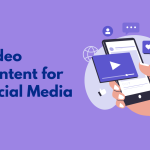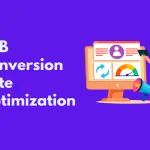The main aim of businesses in the digital age is to reach out to potential customers and attract them to the services and products on offer. Digital marketing has boomed in an unprecedented manner given the digitization of the service delivery models and other external factors such as the ease of access and comfort attached to shopping for the stuff that a customer wants.
The dependence on digital means has only increased with the advent of the coronavirus pandemic and the resultant confinement of people inside their homes. Whereas this confinement spelled doom for many businesses, the ones who were proactive, adapted to the new circumstances swiftly.
The result of this switch can be felt all around us as more and more brands that shied away or were skeptical of digital promotions and customer attraction approaches have changed their minds. They have been investing ample resources, time, and money towards excelling at the digital game.
The crucial point to remember is having a vision towards creating a process of attracting customers to the business and leading them to become long-term, loyal customers.A sales funnel is a trusted way of analyzing and influencing consumer behavior to take them on a journey from having an interest in a service/product sold by you to become valuable customers.
Want to learn more about sales funnels? Keep reading.
In this article, we will discuss what a sales funnel is and what are the various stages that make one. We will lead the way with a few real-life examples of successful sales funnels to show their effectiveness and importance. We will close by providing a holistic step-by-step process of making a functional sales funnel for your business. So, let’s begin.
What is a Sales Funnel?
Simply put, a sales funnel visually represents the journey that a customer has to undertake before making a buying decision from a given business. The said journey comprises various stages, visualized as the top, the middle, and the bottom of an actual funnel.
The steps are never uniform in nature across the market as they vary from company to company, based on respective business models, individual requirements, and the services offered.
A sales funnel visualizes the journey of a prospect from showing interest, contemplation over a product, and the decision of making a buy. It’s useful for the sales, marketing, and other relevant departments of a company because it allows them to identify the loopholes in various stages of consumer interaction and rectify them for future leads.

This allows a company to make foolproof alterations to their sales process wherever necessary and also provides insights into areas where follow-ups would be required in case of prospects.
Since the visualization of the sales process here is in the form of a funnel, it’s only imperative to understand the logic behind it. Like a funnel, the first step, the topmost stage of a sales funnel is the broadest. The reason is that the number of people who interact with your sales process at this stage is the highest.
Many prospective consumers get attracted to your products/services and want to learn more to further satiate their curiosity. But the number of people who contemplate if they would like to buy a given product is comparatively lesser. As a result, the middle stages of the sales funnel become narrower.
By the time we reach the final stages of the sales process, the metaphorical funnel is done filtering everyone whose interest in a product/service could not be changed into an urge of monetary investment. That’s why the visual representation of the bottom stage of the sales process is always shown as having the least width, i.e., it is the narrowest.
Importance of having a Sales Funnel for Your Business
The prerequisite of designing a sales process that is effective in attracting more leads to your business is having awareness about the nature, interests, and attention spans of your target audience.
The sales department must gather and compile a holistic set of data on the interest of your prospects in products in your industry and the level of knowledge that they carry about the same. Having this information allows for creating relevant content and effectively approaching the prospects.
As discussed above, a sales funnel helps in tracking these factors and provides much-needed information on customer behavior. A sales funnel thus, helps in preparing a sales pitch that resonates with the needs and interests of the broader target audience.
It also provides insights on the reasons why prospects drop out of further stages of the sales process before making a buying decision, allowing the sales team to make changes to the nature of the messaging aimed at closing a deal.
For these crucial reasons, having a systematic sales funnel is extremely necessary for your business.
A sales funnel building agency can work with you to develop a comprehensive sales funnel strategy tailored to your business and target audience.
An evergreen funnel building agency can help you determine your target audience’s pain points and create a lead magnet to address their needs. Furthermore, they can assist you in optimizing each stage of the funnel to increase conversion rates.
What is the modern iteration of a Sales Funnel?
Sales funnels have existed for a long time and have focused on persuasion, removing consumer resistance, amicable dismissing of all objections, and closing a sale — with the business being the focal point. But as time has progressed, the motivation behind sales funnels has shifted on the consumer and their needs.
Today, the main objective of the sales funnel is to help a consumer achieve their goals, solve one of their problems, or work towards satisfying their needs. To put it simply, in the digital age, customer satisfaction and user experience are the backbones of all sales activities.
The control of the buying process rests with the consumer, and therefore, sales funnels have had to accommodate for the same and become customer-centric. Thus, the modern iteration of a sales funnel has to cater to the requirements of the digital revolution. Hence, it’s supposed to be centered around enhancing the user experience at its core.
Explained: Various Stages of a Sales Funnel
Sales funnels are based on the AIDA model, where AIDA stands for Awareness, Interest, Decision, and Action. Every business has its requirements and sales management processes. But the basic mold remains the same. It contains similarly structured stages in leading a prospect towards making a purchase. Let’s take a look at these different stages in detail:
1. The Top Most, Broadest Part: Discovery and Awareness

The first step of the sales journey for any prospect is discovery. The target audience needs to discover your business in their pursuit of solving a specific problem through research and gaining awareness. The top of the funnel matters a lot because, at this point, a prospective customer is still in the process of fully recognizing their need.
You can ensure that they reach your business in their search for finding the relevant product or service that coincides with their unfulfilled need. At this stage, your sales reps need to create awareness about your products through avenues such as social media posts, digital ads, content marketing, search engine optimization, or even word of mouth from existing customers.
The success of this stage will depend on the quality of efforts put in by your salesperson in pushing relevant content. Such content helps a prospect identify what they need and develop confidence through awareness and education about a possible solution — a product or service provided by your business.
The awareness stage of your marketing funnel must be equipped to act as a trusted information source and must be enticing enough for the target audience so that they move on to the next step. This step is used for lead generation out of first-time visitors.
2. Coming to the middle part: Piquing Interest through Solution Oriented Research

In the middle stage, your business has finally accumulated leads that aren’t without an identity anymore but exist in the form of solid contacts. These leads can be seen as ideal customers because now they have moved past their doubts surrounding their needs through awareness and are actively looking for finding the most relevant solutions to their problems.
The middle stage of the funnel revolves around the research on all possible solutions, including the products and services provided by you. They work further on their interests and thoroughly compare all possible avenues. Their research includes comparing your products and services with those of your competitors in the industry.
At this step, your strategy should be focused on increasing their interest in your offerings without being too persuasive, as incessant persuasion repulses more than it attracts. You can do this with the help of pro/con lists, comparison charts between your products and similar ones, holistic, interesting, and interactive product guides, product videos, and/or customer feedback & reviews.
Additionally, introducing gamification in the middle of the sales funnel can be a creative and effective way to drive prospects’ interest and increase engagement. Incorporating game-like elements can make the buying process more enjoyable, interactive, and rewarding
Once you have ensured that they have ample interest in your business and what you have to offer, it’s time for you to make them the best offer on a product/service of their interest, as they are in a position to make an informed decision.
3. The Bottom Most, Narrowest Part: Decision Making and Final Action

Now your lead has passed through the upper stages to reach the bottom of the sales funnel, the decision stage. By now, they have identified their problem and developed an interest in possible solutions. Now, they are searching for the best offer so that they can decide on their purchase. At this step, they are going through different buying options for similar products and services to look for a deal that they can’t resist.
Therefore, you must be aware of the deals that might persuade them to move away from your business to a competitor, and accordingly, make them an offer that they can’t possibly overlook. Your motive should be to ensure that you earn a profit, all while giving the best monetary value to your lead. When your leads are satisfied with your offer, they decide to take action and purchase your product.
But this isn’t the end of the customer journey as your work towards customer retention and ensuring their loyalty has just begun. From hereon, your efforts must be directed at expressing your gratitude to the paying customers for trusting your business, reaching out to them for regular feedback, and resolving any pain points regarding the use of your product/service. Use CRM (customer relationship management) software. A CRM tool allows you to take care of all aspects of your customer relationships.
Some Examples of Effective Sales Funnels
A successful sales funnel is characterized by its ability to attract, engage, and convert leads into paying customers. Whether generating leads, increasing sales, or nurturing customer relationships, having a specific objective allows you to design and optimize your funnel accordingly.
It is crucial to understand and segment your target audience based on their characteristics, needs, and preferences. You have to implement various lead generation strategies such as content marketing, social media advertising, search engine optimization, or paid advertising to drive traffic and capture the attention of potential customers.
Additionally, a successful sales funnel is an ongoing testing, measuring, and optimizing process. Regularly analyze your funnel’s performance, conduct A/B testing, and make data-driven adjustments to improve conversion rates, identify bottlenecks, and enhance the overall effectiveness of your funnel.
Now that we have a fair understanding about sales funnels, their stages, and importance, we should take a moment to look at some examples of effective sales funnels from the real world.
1. Netflix
Arguably the video streaming giant has finessed one of the most successful sales funnels in the market. The point to note is that their success lies in the simplicity of their website and app. To begin with, they rely on minimum copy on their pages and provide easily navigable pages.

Their funnel starts with their homepage, which provides complete information about their subscription plans and the nature of their trial(risk-free) The homepage progresses in the form of a timeline and facilitates easy navigation. The next page is the pricing page which also includes FAQs to help a lead find answers to commonly asked questions.
The reason why this simplistic sales funnel works so well is that it focuses on the customer by unambiguously answering their questions with minimum text. The purchase page emphasizes security and supports multiple buying options for the ease of the customer. Netflix uses the recognition of its brand to make a successful sales funnel without trying too hard.
2. Groupon
It is a coupon aggregator/database for providing deals on localized products. They have perfected their sales funnel over the years and attract millions of customers monthly. Their funnel begins with their homepage that presents an email opt-in pop-up as soon as you land on it. This pop-up strategy has fetched them continuous results over the years.

Their sales funnel aims at generating maximum traffic through paid ads, affiliate marketing, referrals, etc. Next, the said pop-up gives the visitors an incentive to provide their contact information in the form of their email addresses. These sign-up incentives include deals on food orders, salons, and much more.
Once you reach the stage of developing interest in their coupons, they start tailoring deals according to your preferences and send them to you through personalized email lists. The sales funnel works because it’s not too complicated and majorly depends on an email marketing model.
3. Basecamp
Basecamp is a tool that provides project management options for remote teams. Their sales funnel starts with listing the problems they can solve through their services. They have focused on giving a personalized experience to their target audience.

The steps in their sales funnel starts from traffic generation through their blog, organic search results, and public relations efforts. The prospects who reach their homepage are greeted with information on the services offered, along with the social proof of their success.
Finally, they provide a free 30 day trial to interested prospects to allow them to make an informed decision based on first-hand experience of the product.
Their sales funnel works because it emphasizes testimonials from existing customers. Their approach instills confidence in the prospects and provides them with a free taste of their services.
4.Harvest
Harvest is a time tracking tool that provides impeccable minimalistic design on its website. Its sales funnel works essentially on CTA(call to action model), and its homepage contains several CTAs across it, with the main one being a free 30-day trial. The rest of the homepage consists of product descriptions and top testimonials.

The free trial option takes an interested user to the sign-up page. Through this page, they collect relevant information about the user and use it in the next stages of the sales process.
Their sales funnel works because it hinges on simplistic and clear design elements that effectively capture user attention and pique their interest, with added help from real-life customer testimonials. The next stages in their sales funnel contain detailed case studies on how it helps customers.
How To Make A Sales Funnel?

1. Analyzing The Behavior And Requirements Of The Target Audience
Learning everything about your target audience is a prerequisite for the success of each stage of your sales funnel. You must actively work towards collecting and compiling data on the behavior of your target audience, from their motivation to click on a search link to the time they spend on a given page.
Making buyer personas always work. Also, the automation of the compilation process is ideal. Analyze the collected data thoroughly and work on your marketing strategies accordingly. You should work towards learning about the requirements of your target audience so that you can design content aimed at providing solutions to these requirements.
2. Working to catch attention of the target audience
Once you have analyzed the behavior, needs, and requirements of your target audience, you will be better equipped to capture their attention and bring them to your business. You can lure the target audience to your business by giving them relevant information. Make it a point to use the organic route — posting content.
Work on your SEO and add quality backlinks to all of your content — you may also take the help of a free backlink checker.
When you post content that contains information about your products across various platforms but broadly focuses on a bigger problem, your target audience can find your business in their quest to find solutions to the said problem. Thus, you can help create the audience’s interest in your products/services.
Make sure that your content is super interactive. Include images, videos, infographics, and other such elements. The Interactiveness of your content is vital in capturing attention. This step is also crucial for SEO.
3. Build a Landing Page that offers value and holds attention
The purpose of your content or other marketing tactics is to bring the target audience to your business’s landing page. You need to ensure that you build a landing page that is a lead magnet. It should contain eye-catching details, irresistible offers, and sign-up options. The landing page must add value to the target audience.
The effectiveness of your landing page will be the difference between the success or failure of the initial steps of your sales funnel. Include various calls-to-action on the landing page and propel your prospects to reach the further stages of the funnel. You should make it a point to upsell your brand
4. Create marketing campaigns that build on interest
Once your content and landing pages have piqued the interest of your target audience in your business, it will be time to create marketing campaigns that further push the product/service in question.
The motive of the marketing team at this step should be to come up with creative ideas to educate your leads on your product/service and increase conversion rates. The success of the next stages of the funnel depends on the level of interest that your target audience possesses for your business’s offerings.
Making your best offers to an interested customer for enabling them to make a sales decision is also a part of this step. You can search the web for some solid content marketing funnel tips.
5. Stay connected with the customer
In the final step, make all possible efforts to work on customer feedback and solve all issues related to your product. You should make active efforts to stay connected with your existing customers to build trust and make a name for yourself. And there you have it — a sales funnel of your own.
Conclusion
To conclude, we have now learned all aspects related to sales funnels, from definition and examples to steps for making a successful one. It’s time that you put your knowledge to use and go build a sales funnel that works wonders for your business.

Vaibhav Kakkar is the Founder and CEO of Digital Web Solutions, a globally trusted agency with a full suite of digital marketing services and development solutions. Vaibhav believes in building systems over services, and has helped scale up agencies from scratch to niche-leaders with million dollar turnovers.








Leave a Reply